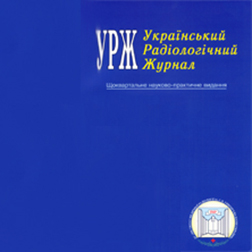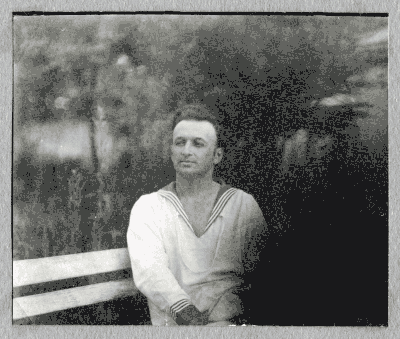UJR 2004, vol XII, # 2

THE CONTENTS
2004, vol 12, № 2, page 121
V. Mamontovas, K. Janulis
Contemporary tendencies of diagnostic image quality assurance in radiology departments
Annotation
Objective: To study modern tendencies in the area of reduction of patient radiation load and image quality assurance in the western countries as well as to compare them with the original findings obtained at Oncology Institute of Vilnius University.
Material and Methods: X-ray films Kodak, AGFA, sensito- meter AGFA-383 and densitometer AGFA-381 were used. In 252 studied densitograms the changes in sensitivity index did not exceed 0.2 units of optic density. The percentage of the images with increased tolerance limits was established. The frequency of repeated x-ray studies was determined. Using Rex phantom with radiation absorption similar to human body and PTW-Conny dosimeter, 250 dosimetry measurements of patient doses were performed. The portion of the exposure dose used for forming x- ray images and radiation load of the patients at various anode voltage were determined. The obtained findings were compared with the data of different authors.
Results: According to Oncology Institute of Vilnius University, 14% of expose dose at anode voltage of 125 kV was used to create the images, at 90 kV - 8.2% , at 70 kV - 3.6% . Owing to constant control of the image quality, the number of films with increased veil reduced from 22 to 13%, the number of films revealed at changes of sensitivity index not exceeding tolerance limits (i.e. <0.2 units of optic density) increased from 36 to 65% . The number of cases of exceeding tolerance limits as well as methodological errors decreased.
Conclusion: The use of increased to the recommended norms anode voltage allows to reduce 2.5 times radiation load of the patients. Constant control of the image quality, the use of films and screens sensitive to green light allows to reduce radiation load of the patients, which is confirmed by the experience of foreign specialists.
Key words: image quality, image quality assurance.
2004, vol 12, № 2, page 125
М. І. Spuzyak, І.O. Kramniy, І.O. Vorongev, V. V. Shapovalova
X-ray diagnosis of hemorrhages to the lungs in newborns with intranatal CNS lesions
Annotation
Objective: To study x-ray signs of hemorrhages to the lungs in newborns with intranatal CNS lesions.
Material and Methods: X-ray films of 59 dead newborns (36 boys and 23 girls) who had been treated with the diagnosis severe hypoxic ischemic CNS lesions, craniospinal intranatal injury, severe asphyxia, respiratory distress syndrome and possible pneumonia, were studied. To verify the diagnosis all the patients were performed ultrasound study of the heart and brain, x-ray study of the skull and cervical spine as well as complete clinical laboratory study. Dynamic x-ray study of the chest was done in 25.4% of cases.
Results: In 45% of cases the most characteristic x-ray signs of hemorrhages to the lungs were foci-like shadows (3- 4 mm ) mainly in the medial portions from the both sides, of high and medium intensity with indistinct outlines which corresponded intraalveolar and intrabronchial hemorrhages. In 23.7% of cases the shadowed areas were band-like with distinct outlines of high and medium intensity mainly in the superormedial portions on the right. Histology study demonstrated interstitial hemorrhages. Massive hemorrhages to the lungs were diagnosed in 30.5% of cases, they were presented by diffuse reduction of the lung tissue density from the both sides, of medium intensity without distinct outlines. The roots of the lungs and pulmonary picture were not observed. In 16.9% of cases free bands of bronchi («air broncho-gram» sign) were observed. In27.1% of patients atelectases were present: subsegment(15.3%), segment (11.8%). Pneumonia was revealed in 44% of newborns, mainly focal and focal merging (28.8%) and segment (15.2%). Development of pulmonary edema was noted radiologically in 57.6% of cases.
Conclusion: X-ray study is a leading method in making the diagnosis of hemorrhage to the lungs in newborns with intranatal CNS lesions. It allows to determine the character of hemorrhages, the degree of dissemination of the process, dynamics and efficacy of the treatment.
X-ray signs of hemorrhages to the lungs are various and polymorphous in this group of patients, which requires differentiation from pneumonia and respiratory distress-syndrome.
Key words: hemorrhages to the lungs, CNS, newborns, chest x-ray.
2004, vol 12, № 2, page 129
Y. M. Guk, G. Y. Vovchenko
Characteristics of neoplasm ultrasound diagnosis in patients with musculosKeletal diseases with type 1 neurofibromatosis
Annotation
Objective: To evaluate the role of ultrasound study in visualization of nerve neoplasms in patients with musculoskeletal pathology with type 1 neurofibromatosis.
Material and Methods: Ultrasound study was done in 18 children and teenagers with orthopedic manifestations of neurofibromatosis using HDI-3500 unit ( USA ) with 5-10 MHz phase probes. Age distribution of the patients was as follows: 2-6 years - 3 children, 7-12 years - 9 children, 13-18 years - 6 children. Ultrasound visualization of nerve tumors was performed at presence of clinical signs of the nerve disorder (characteristic pains, paresthesias) and with the purpose of screening. Nerve identification was possible due to accurate anatomical landmarks.
Results: Sonographically the nerves looked like echogenic tubular structures resembling the structure of tendons at longitudinal visualization. In transverse images the nerves looked like oval or round formations and included internal punctate signals. The tumors of the nerve, irrespective of the type, looked like hypoechogenic masses. Swannoma was visualized like a hypoechoic mass with regular outlines, of ovoid or spherical shape directed from the axis of the nerve. At the beginning of development small swannomas did not tend to further growth to the stem portion of the nerve and in the majority of cases they preserved a spindle shape resembling neurof ibromas.
Conclusion: Ultrasound study is an informative technique for visualization and evaluation oft he size of neurofibromas, topographic localization and growth monitoring.
Key words: ultrasound study, musculoskeletal system, neurofibromatosis, tumor.
2004, vol 12, № 2, page 133
І. М. Homazyuk, O. М. Nastina, N. V. Kursina
The changes in the structure and functions of the heart in participants of Chornobyi accident clean-up with coronary artery disease under the influence of angiotensin converting enzyme inhibitors
Annotation
Objective: To determine the regularities of influence of angiotensin converting enzyme (ACE) inhibitors on the signs of angina, the structure and function of the heart and to evaluate the efficacy of their administration in participants of Chornobyl accident cleanup with coronary artery disease.
Materials and Methods: The study involved 102 participants of Chornobyl accident clean-up with coronary artery disease (CAD) and stable class II and III angina. CAD duration was 6.6±1.0 years, mean age 56.3±1.5 years. All of them participated in Chornobyl accident clean-up in 1986-1987. Mean dose of external irradiation was 21.8±0.06cSv. Main group included 70 patients, controls 32 patients, representative for all parameters. In patients of the main group, ACE inhibitors were administered in addition to the basic therapy (48 - Enalapril maleate, 22 - Captopril). The examination was performed during the control period and was repeated 4 weeks later. ACE inhibitors influence was evaluated according to the changes in the clinical signs, circadian ECG monitoring, echo- and Doppler cardiography.
Results: According to circadian monitoring, in all patients with angina the ratio of painful to painless ischemia was 1/2.5. Correlation between the incidence of angina and ionizing radiation within the dose range not exceeding 25 cSv was not revealed. Correlation between the integral grade of negative memories about Chornobyl accident and frequency and duration of ischemia episodes was established (r=0.44, p<0.05). The treatment with ACE inhibitors allowed to reduce the incidence and duration of angina attacks in 41% of the patients. Total duration of depression in ST segment in the main group decreased by 96.2% vs 71.2% in the controls. Painless ischemia in the main group decreased by 93.8% vs 68% in the controls. The episodes of painful ischemia were not registered in the main group, in the controls their incidence decreased by 85.2%. Reduction of the number of ischemia episodes per one patient from the main group did not exceed the controls. Mean duration of one episode after the treatment reduced by 10.2 min while in the controls these changes were not significant. The number of episodes with paired and grouped extrasystole reduced 10 times in the main group and 3.4 times in the controls. Ejection fraction increased significantly in the patients who were treated with ACE inhibitors (10.1% vs 5.7% in the controls, p<0.05). The incidence of cases when ejection fraction lower 50% decreased by 24.3% in the main group while in the controls - by 6.2 % . The changes of the following indices were significant: EDV (10.4% ), ESV (12.9%), UI (16.1 %). Of the criteria characterizing diastolic function of the left ventricle, the most sensitive to ACE inhibitors were time of isovolumetric relaxation and pressure gradient at the mitral valve. The indices of left ventricle hypertrophy in the main group did not increase while in the controls increase in the thickness of the posterior wall of the left ventricle and interventricular septum was noted.
Conclusion: ACE inhibitors positively influence the clinical signs of coronary artery disease and prevent further complications.
Key words: participants of Chornobyl accident clean-up, coronary artery disease, angiotensin converting enzyme inhibitors.
Social networks
News and Events
We are proud to announce the annual scientific conference of young scientists with the international participation, dedicated to the Day of Science in Ukraine. The conference will be held on 20th of May, 2016 and hosted by L.T. Malaya National Therapy Institute, NAMS of Ukraine together with Grigoriev Institute for medical Radiology, NAMS of Ukraine. The leading topic of conference is prophylaxis of the non-infectious disease in different branched of medicine.
of the scientific conference with the international participation, dedicated to the Science Day, «CONTRIBUTION OF YOUNG PROFESSIONALS TO THE DEVELOPMENT OF MEDICAL SCIENCE AND PRACTICE: NEW PERSPECTIVES»
We are proud to announce the scientific conference of young scientists with the international participation, dedicated to the Science Day in Ukraine that is scheduled to take place May 15, 2014 at the GI “L.T. Malaya National Therapy Institute of the National academy of medical sciences of Ukraine”. The conference program will include the symposium "From nutrition to healthy lifestyle: a view of young scientists" dedicated to the 169th anniversary of the I.I. Mechnikov.
Ukrainian Journal of Radiology and Oncology
Since 1993 the Institute became the founder and publisher of "Ukrainian Journal of Radiology and Oncology”:


